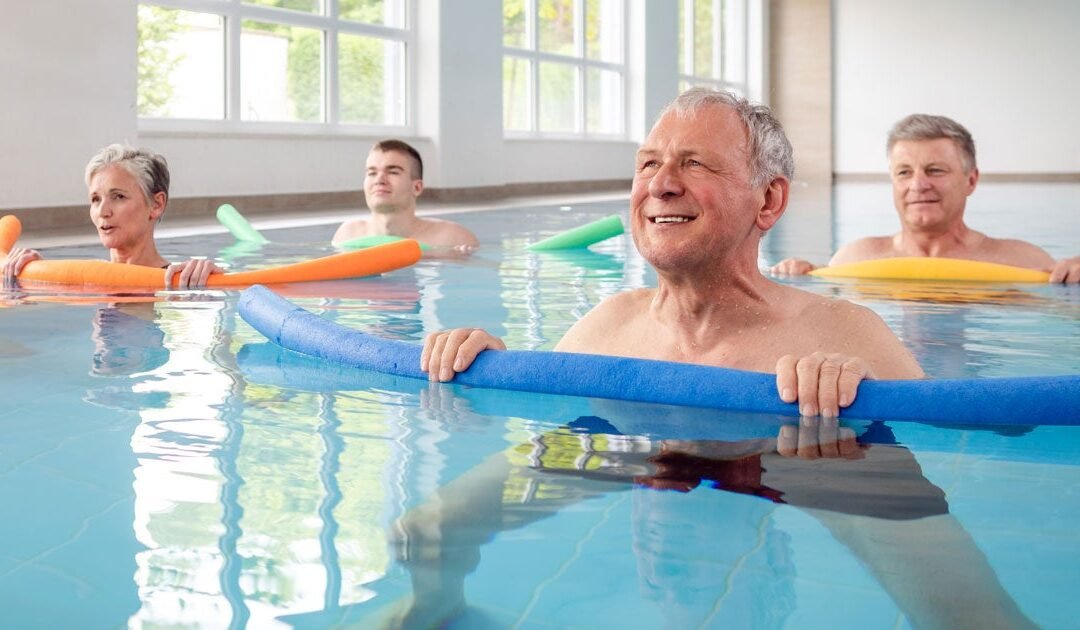As the population ages, maintaining a healthy and active lifestyle becomes increasingly important for seniors. In-home health care workers play a pivotal role in encouraging and facilitating exercise routines that contribute to the overall well-being of their senior clients. This comprehensive guide explores the benefits of exercise for older adults, the challenges they may face, and practical strategies for in-home health care workers to incorporate enjoyable and effective exercise regimens into daily routines.
The Importance of Exercise for Seniors
1. Physical Health Benefits
Regular exercise offers a myriad of physical health benefits for seniors, including:
- Improved Cardiovascular Health: Exercise enhances heart health, reducing the risk of cardiovascular diseases.
- Enhanced Mobility and Flexibility: Regular physical activity helps maintain joint flexibility and supports overall mobility.
- Strength and Balance: Strength training exercises are crucial for preventing muscle atrophy and enhancing balance, reducing the risk of falls.
- Weight Management: Physical activity supports healthy weight management, reducing the risk of obesity-related conditions.
2. Cognitive Health Benefits
Engaging in regular exercise also positively impacts cognitive health:
- Memory and Cognitive Function: Physical activity has been linked to improved memory and cognitive function in older adults.
- Reduced Risk of Dementia: Studies suggest that exercise may contribute to a lower risk of developing dementia.
3. Emotional and Mental Well-Being
Exercise has profound effects on emotional and mental well-being:
- Mood Enhancement: Physical activity stimulates the release of endorphins, promoting a positive mood.
- Reduced Stress and Anxiety: Regular exercise can help alleviate stress and anxiety, contributing to better mental health.
- Social Engagement: Group exercise activities provide opportunities for social interaction, reducing feelings of isolation.
Understanding the Challenges
Before developing an exercise plan for senior clients, it’s crucial for in-home health care workers to understand the potential challenges they may face:
1. Health Conditions
Seniors often have various health conditions that can impact their ability to exercise. Common concerns include arthritis, osteoporosis, and cardiovascular issues.
2. Mobility Limitations
Many seniors experience reduced mobility, making certain exercises challenging. In-home health care workers need to tailor exercise plans to accommodate mobility limitations.
3. Cognitive Impairment
For seniors with cognitive issues, providing clear instructions and utilizing exercises that engage both the body and mind is essential.
4. Lack of Motivation
Some seniors may lack the motivation to engage in regular exercise. It’s crucial to make physical activity enjoyable to encourage consistent participation.
Tailoring Exercise Plans for Seniors
1. Low-Impact Cardiovascular Exercises
For seniors, low-impact cardiovascular exercises are beneficial for heart health without placing excessive stress on joints. Examples include:
- Walking: A simple and accessible exercise that can be adapted to different mobility levels.
- Swimming or Water Aerobics: Ideal for those with joint issues, providing resistance without impact.
- Cycling: Stationary or outdoor cycling is gentle on the joints and improves cardiovascular fitness.
2. Strength Training
Strength training is essential for maintaining muscle mass and supporting activities of daily living. In-home health care workers can incorporate:
- Bodyweight Exercises: Include activities like squats, lunges, and modified push-ups.
- Resistance Band Workouts: Provide gentle resistance for strengthening without the need for heavy weights.
3. Flexibility and Balance Exercises
Maintaining flexibility and balance is crucial for preventing falls and enhancing overall mobility. Recommended exercises include:
- Tai Chi: A low-impact exercise that improves balance and promotes relaxation.
- Yoga: Gentle stretching and balance exercises can be adapted to various ability levels.
- Chair Exercises: Seated exercises are excellent for those with mobility challenges, focusing on flexibility and balance.
4. Cognitive Exercises
Incorporating cognitive exercises into physical activities benefits both the body and mind:
- Dance Classes: Dancing engages cognitive functions and provides an enjoyable form of exercise.
- Memory Games: Combine physical activity with memory games to stimulate cognitive function.
5. Social Activities
Creating a social atmosphere around exercise can enhance motivation and engagement:
- Group Walks or Exercise Classes: Foster a sense of community and support by organizing group activities.
- Family Involvement: Encourage family members to participate in exercise routines, promoting a supportive environment.
Implementing Exercise Routines: Practical Strategies
1. Individualized Assessment
Before initiating an exercise plan, conduct a thorough assessment of the senior’s health, mobility, and preferences. This allows for the development of a tailored and effective exercise routine.
2. Gradual Progression
Start with simple exercises and gradually increase intensity and complexity. This approach ensures the senior can adapt to the routine without feeling overwhelmed.
3. Consistent Schedule
Establish a regular exercise schedule to create a sense of routine and make physical activity a natural part of the senior’s day.
4. Safety First
Prioritize safety by ensuring the exercise environment is free from hazards. Additionally, be aware of any signs of discomfort or fatigue during exercise.
5. Motivational Techniques
Employ motivational techniques to keep seniors engaged:
- Set Achievable Goals: Establish realistic and attainable goals to celebrate progress.
- Variety in Activities: Keep routines interesting by incorporating a variety of exercises.
- Positive Reinforcement: Provide positive feedback and encouragement to boost motivation.
6. Utilize Technology
Explore technology tools such as fitness apps or online classes designed for seniors. These resources offer guided exercises and can make the experience more interactive.
In-home health care workers play a crucial role in promoting the well-being of senior clients through the incorporation of tailored exercise routines. By understanding the benefits of exercise, recognizing potential challenges, and implementing practical strategies, in-home health care workers can empower seniors to lead healthier, more active lives. Through a combination of cardiovascular exercises, strength training, flexibility activities, and cognitive stimulation, seniors can experience enhanced physical and mental well-being, fostering a higher quality of life in the comfort of their homes.


 RSS - Posts
RSS - Posts